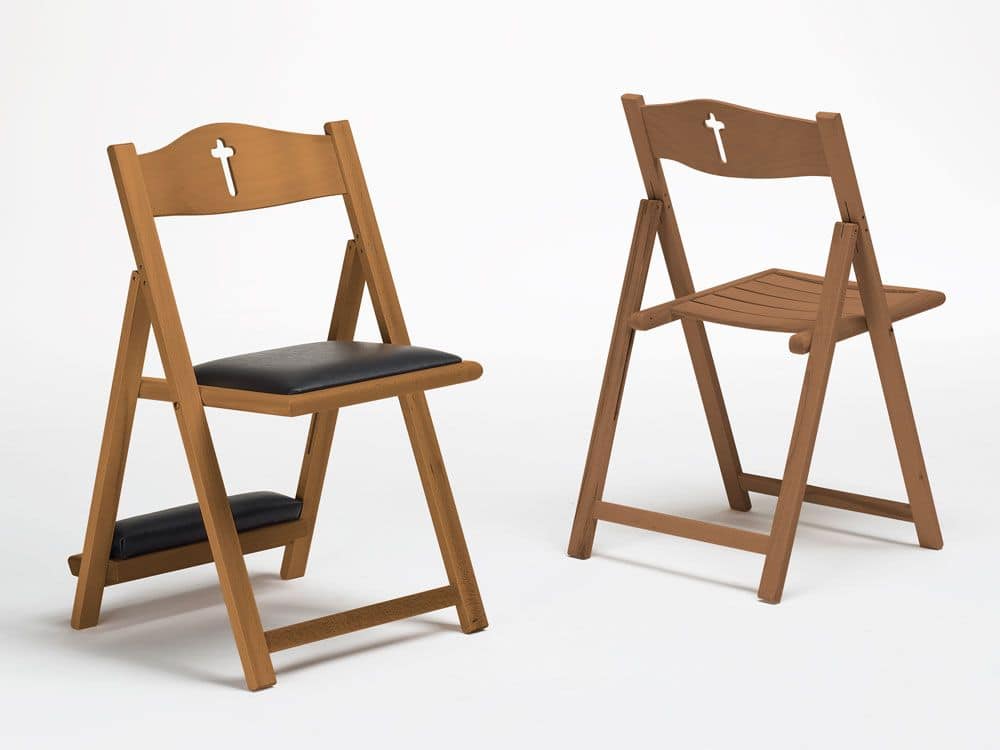Church chairs with kneelers are a staple in many places of worship, offering a combination of comfort, practicality, and spiritual symbolism. These chairs play a crucial role in the liturgical practices of various Christian denominations, providing a dedicated space for prayer and reflection. This article delves into the historical development, design features, materials, and significance of church chairs with kneelers.
Historical Development
The evolution of church seating has been influenced by changes in liturgical practices, architectural styles, and congregational needs. Initially, early Christian worship involved standing or sitting on simple benches. The introduction of pews in the medieval period marked a significant shift, providing a more structured seating arrangement.
However, as worship practices evolved, particularly in the post-Vatican II era, there was a growing emphasis on the active participation of the laity. This shift necessitated more versatile and comfortable seating options, leading to the development of the church chair with a kneeler. This design allows congregants to seamlessly transition between sitting and kneeling, accommodating various forms of prayer and worship.
Design Features
Church chairs with kneelers are designed with both functionality and reverence in mind. Key features include:
- Ergonomic Design: These chairs are crafted to provide comfort during long services. They often feature padded seats and backs, which reduce strain and fatigue.
- Integrated Kneelers: The kneeler is typically attached to the back of the chair in front, ensuring stability. It is cushioned to provide comfort during prolonged kneeling and is designed to be easily folded away when not in use.
- Durability: Constructed from high-quality materials such as hardwood, metal, or sturdy composites, these chairs are built to withstand frequent use. The upholstery is usually made from durable fabrics or leathers that are easy to clean and maintain.
- Stackability: Many church chairs with kneelers are designed to be stackable, facilitating easy storage and reconfiguration of worship spaces for different events.
- Aesthetic Appeal: The design often incorporates elements that complement the church's interior, such as wood finishes, fabric colors, and decorative details that reflect the sacred environment.
Materials
The choice of materials for church chair with kneelers is critical in balancing durability, comfort, and aesthetic appeal. Common materials include:
- Wood: Often used for its classic and timeless appearance, wood can be stained or painted to match the church's décor. Oak, maple, and cherry are popular choices.
- Metal: Steel or aluminum frames provide robust support and longevity. These materials are often used in conjunction with padded seats and backs.
- Fabric and Padding: Upholstery fabrics are chosen for their durability and ease of maintenance. Padding materials, such as high-density foam, ensure comfort during long services.
Significance in Worship
The integration of a kneeler into the church chair is not merely a matter of convenience but holds deep liturgical and spiritual significance. Kneeling is a posture of humility, reverence, and penitence, reflecting the worshipper's attitude towards God. The presence of a kneeler encourages and facilitates this posture, enhancing the worship experience.
In many Christian traditions, specific moments in the liturgy, such as prayers of confession, consecration, and adoration, are accompanied by kneeling. The church chair with a kneeler supports these practices, making it easier for congregants to participate fully in the liturgy.
Practical Considerations
When selecting church chairs with kneelers, churches must consider several practical aspects:
- Space and Layout: The size and layout of the worship space will influence the choice of chair dimensions and the arrangement. Stackable designs offer flexibility for multi-purpose spaces.
- Comfort and Accessibility: Ensuring that the chairs are comfortable and accessible to all congregants, including the elderly and those with disabilities, is essential. This may involve choosing chairs with armrests or ensuring adequate spacing for mobility aids.
- Maintenance: The durability and ease of cleaning of the materials used are important for long-term maintenance. Sturdy construction and quality upholstery can reduce the frequency and cost of replacements.
- Budget: While church chairs with kneelers are an investment, balancing cost with quality is crucial. Many manufacturers offer bulk pricing or discounts for larger orders.
Church chairs with kneelers are a testament to the thoughtful integration of functionality and spirituality in worship environments. They provide comfort and support, enhancing the worship experience and allowing congregants to engage more fully in liturgical practices. As churches continue to evolve, these chairs will remain a vital component, bridging tradition and modernity in sacred spaces.




